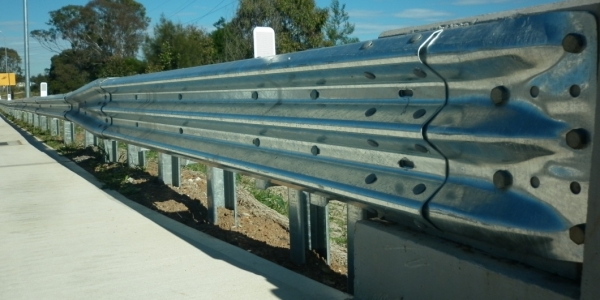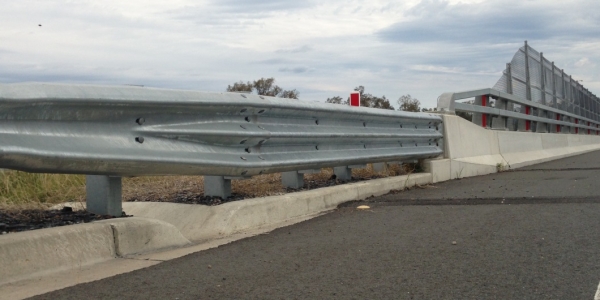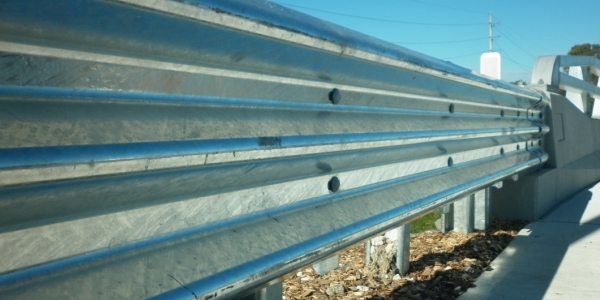Rigid barriers constructed from concrete or heavy-duty steel sections are predominately used on bridges where there is no available space to accommodate barrier deflection.
In many instances, the areas on either side of a bridge are shielded with a longitudinal barrier such as a W-beam guardrail.
The connection between a guardrail and a concrete barrier is also known as a ‘transition’ or ‘bridge approach’ system.
The key function of a bridge approach system is to reduce the potential for vehicle pocketing, by way of providing a continuity of protection when two different guardrail systems are connected.




